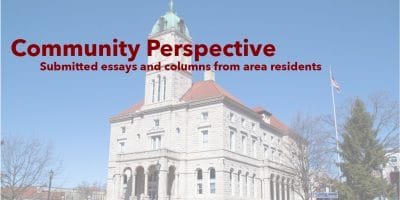By Eric Gorton, Senior Contributor
In Lexington, Kentucky, ambulance calls have decreased almost 7% since the city implemented a community paramedicine program in 2018, according to a recent story in the Lexington Herald-Leader. Harrisonburg Fire Chief Matt Tobia hopes to see similar results locally when the city fire department launches its own program sometime in the coming year.
The Herald-Leader story, reprinted by Government Technology, provides a pair of examples highlighting how the Lexington Fire Department’s paramedicine program responds to people in crisis, but not immediate emergency.
A 2012 report by the U.S. Health Resources and Services Administration characterizes community paramedicine as an emerging health care field where emergency medical technicians and paramedics operate in expanded roles in an effort to connect underutilized resources to underserved populations. In urban areas, the report states, many community paramedicine programs have been designed to keep “frequent fliers” out of the emergency care system by ensuring their health care needs are met in other ways.
Harrisonburg’s program will get off the ground with $600,000 from the federal Bureau of Justice Assistance, to be paid in $200,000 installments for the next three years. While a handful of other fire departments in Virginia have community paramedicine programs, Tobia said the Harrisonburg Fire Department is the first in the state to get BJA funding for one.
“This program is really focused on trying to improve linkages, really get people who need specific services connected to those specific services and then take some pressure off of our law enforcement partners,” he said. “If it sounds a lot like social services, there is a big social services component to this.”
“The benefit of having community paramedics is, not only are they going to be trained in some of the social services aspects, but because they are paramedics, they have the ability to do some really good medical assessments of individuals and clear them for transfer to mental healthcare directly,” Tobia said.
The money will pay for about 95% of the costs to launch the program, including the salaries and benefits for two full-time community paramedics who will be city employees assigned to the fire department. The fire department is researching other grant opportunities to purchase a vehicle for the program but could repurpose an existing vehicle if a new one cannot be purchased.
Advertising to fill the two positions could happen in May or June. Tobia hopes to have the new employees, who will already need to be paramedics, hired by July. It could take another six months until the new community paramedics are independently responding to calls.
“We really want to make sure we do a good job of getting the protocols right for under what circumstances we want them to go automatically, when they would be available to respond on call and what actions we want them to take once they get there,” Tobia said. There could be times when the paramedics respond to situations with law enforcement.
With just two paramedics, the service will operate 12 hours a day, seven days a week.
“There may be nurses out there who are interested in functioning in this role, even nurse practitioners or (physician assistants),” Tobia said.
The new employees likely will get some training on how to engage individuals who might be experiencing a mental health crisis or who might need assistance other than primary health care. They also will be trained on keeping themselves safe.
The paramedics will not respond to medical emergencies such has heart attacks or strokes, nor will they be firefighters.
“We have firefighters in the fire department who are cross trained as paramedics, who are prepared to provide that emergency level of care. This is a much, much different focus,” Tobia said.
The variety of calls the fire department responds to makes it the logical agency to house the paramedicine program.
“We do so much more than just respond to fires,” Tobia said. “When you look at the individuals that we encounter, there is a percentage of individuals who are experiencing homelessness, experiencing substance abuse dependency, experiencing unemployment, experiencing encounters with law enforcement. It’s a very complex set of circumstances. We know these individuals; we are in a position to do something about this challenge.”
Tobia said a long-term goal would be to demonstrate that the program can divert people from emergency departments and even incarceration.
“I have no rose-colored glasses,” he said. “This is a wicked problem. Creating a community paramedicine program is not going to solve all of the issues that we are dealing with, but we hope what it will do is begin the process of being able to identify individuals who are in need of help and then connecting them with the right resources, meeting them where they are. That’s one of the biggest challenges.”
Journalism is changing, and that’s why The Citizen is here. We’re independent. We’re local. We pay our contributors, and the money you give goes directly to the reporting. No overhead. No printing costs. Just facts, stories and context. We’re also a proud member of the Virginia Press Association. Thanks for your support.














